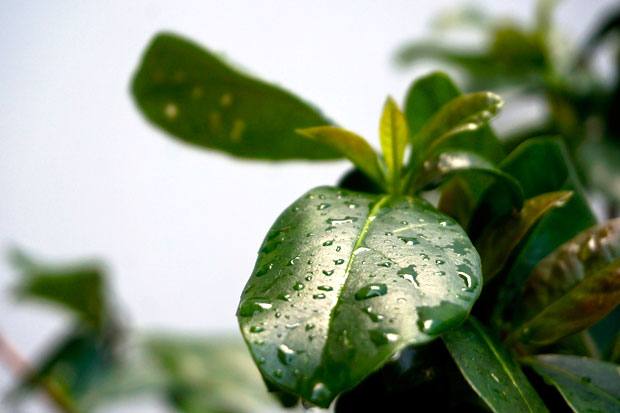Researchers at Monash University have published a breakthrough paper detailing their success in creating hydrogen and oxygen from water and sunlight in a process which artificially mimics photosynthesis, the source of most of the world’s energy, including the fossil fuels that currently dominate energy markets.
The research represents a new level of efficiency in this so-called ‘artificial leaf’ technology which scientists say could become commercially viable within a few years because researchers have managed to produce a record-high level of hydrogen using nickel as a type of conductor, rather than more expensive precious metals.
“The reason this technology has not been at the forefront [of the discussion around renewable energy]is that it’s not that efficient,” said Professor Douglas MacFarlane, one of the researchers behind the paper.
“There are better catalysts and materials that people have been working on for probably 10 or 15 years, but what we’ve done is show that you can actually do this with cheaper materials that are [still, and in this case particularly, efficient ].”
The process the researchers followed involves taking water, sunlight, and some conventional wiring, and using them to produce oxygen and the hydrogen that can then be converted into a range of fuels, including electricity, and stored with relative ease.
“The hydrogen comes out under some pressure, if you wish that to be the case, and for storing larger volumes of it you either further compress it (into a tank) or there are materials that absorb hydrogen called hydrogen storage materials,” Prof MacFarlane said.
“The idea of making a fuel directly from sunlight is rapidly becoming practical at a household and petrol station level, and even at the solar farm level.”
Prof MacFarlane said at this stage researchers were “simplifying photosynthesis in the most extreme way that we can,” meaning unlike the photosynthesis found in nature the ‘artificial leaf’ does not require the input of carbon dioxide to generate energy, although this is the next frontier for the virgin technology.
The ‘artificial leaf’ the Monash researchers have developed does however produce oxygen, and there’s a chance this could be deployed to help rebalance the excess of carbon dioxide in the atmosphere which is driving climate change.
“Now obviously you could just grow plants for that purpose,” Prof MacFarlane said, “but that’s not effective enough”.

“It takes too much land and water, so this could ultimately be a way of reversing the net-carbon flow which is currently out of the Earth and into the atmosphere.”
However Prof MacFarlane said a more likely application would be bringing carbon dioxide, which is used in the natural version of photosynthesis, into the equation as an input to fuel the ‘artificial leaf’.
He said that “in the space of 30 years we may see significant carbon storage building up” as a result of the carbon capture and storage technologies being developed to sequester carbon from coal-fired power stations, and that there’s the potential ‘artificial leaf’ technology could use this as a fuel.
In the natural version of photosynthesis, involving carbon dioxide as an input, carbohydrates would be a bi-product and MacFarlane said a comparable “bigger, heavier molecule, which is liquid or even solid” would be much more easily and safely stored underground than the carbon sequestered from coal-fired power stations.
That sort of application is still a ways off, but MacFarlane and his colleagues have broken down a key efficiency barrier, both in terms of the success rate of converting the solar energy used to hydrogen, and the cost of catalyst materials to drive the necessary chemical reactions.
‘Artificial leaf’ devices are considered to be effective if 10 per cent of the solar energy captured is converted into hydrogen and earlier efforts had resulted in a conversion rate of around 18 per cent.
However they required more expensive and rarer metals for use as catalysts, whereas the Monash researchers were able to achieve a conversion rate of solar energy to hydrogen of around 22 per cent using nickel instead.
“[‘Artificial leaf’ technology] could become a significant part of the whole sustainable energy picture,” Prof MacFarlane said, and work side by side with other sources of renewable energy in the near future, partly because it’s easier to store.
“The storage issues we’ve faced [with other technologies]is that while we can put solar panels on our roof, we have to store that electricity if we’re going to make use of it 24 hours a day,” he said
“That’s becoming a very big issue in energy markets, the intermittence problem. The sun doesn’t always shine, and the wind doesn’t always blow. So in this regard the hydrogen we’re talking about making is an ideal, very simple and clean, storage medium.
“It’s no more difficult to handle as a simple gas than the natural gas we use in our stoves and barbecues.”
Donate To New Matilda
New Matilda is a small, independent media outlet. We survive through reader contributions, and never losing a lawsuit. If you got something from this article, giving something back helps us to continue speaking truth to power. Every little bit counts.





